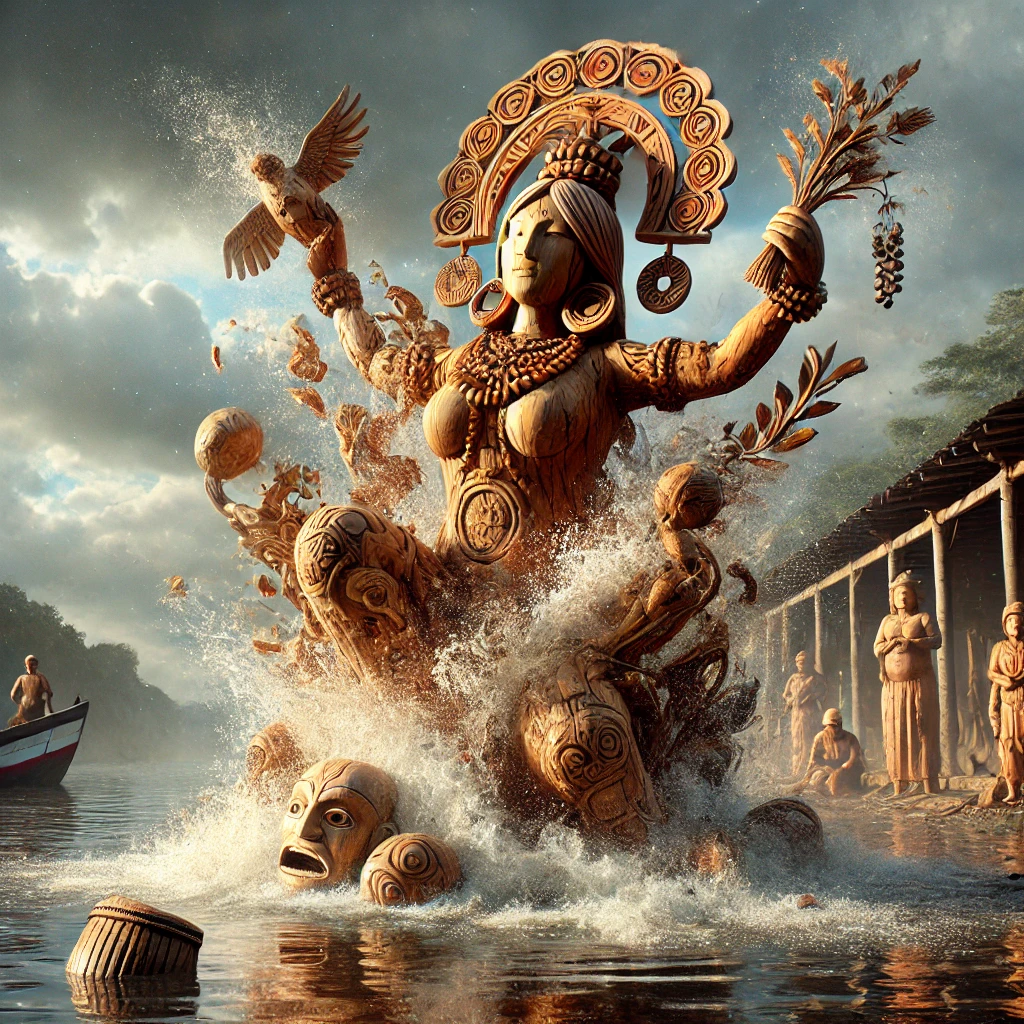Pachamama

In October 2019, during the Synod of Bishops for the Pan-Amazon region, the Vatican hosted several events that included the use of statues referred to as “Pachamama,” a term tied to the Andean fertility goddess representing Mother Earth. On October 4, 2019, a tree-planting ceremony in the Vatican Gardens marked the opening of the synod. Pope Francis was present at the ceremony, which featured wooden statues of a naked pregnant woman. These figurines were part of a procession intended to emphasize themes of ecology and respect for indigenous cultures, as explained by the Vatican. Following the ceremony, the statues were placed in the Church of Santa Maria in Traspontina, near the Vatican, where they were incorporated into various events and rituals.
The inclusion of these statues sparked significant controversy within the Catholic community. Critics questioned their appropriateness in a Christian context, expressing concerns over their perceived symbolic significance. The controversy escalated on October 21, 2019, when two individuals removed the statues from the church and threw them into the Tiber River, an act that was recorded and widely shared online.
In response, Pope Francis issued an apology during a synod session, clarifying that the statues had been displayed without idolatrous intent and expressing regret over their removal. He also noted that the statues had been recovered and were in the custody of Italian police.
These events brought to light the complexities of incorporating indigenous symbols and rituals into Catholic practices. While the Vatican maintained that the intention behind using the Pachamama statues was respectful and non-idolatrous, the controversy ignited broader discussions about the limits of inculturation and the Church’s approach to respecting and integrating indigenous cultures.
Pachamama, meaning “Mother Earth” in Quechua and Aymara, is central to the spiritual and cultural life of the Andean peoples, particularly during the Inca civilization. She symbolizes the earth’s fertility, overseeing planting and harvesting, and is revered as a nurturing force that sustains all life. In Inca mythology, Pachamama is considered the wife of the sky god Pachakamaq and the mother of deities such as Inti, the sun god, and Mama Killa, the moon goddess, reflecting the Incas’ profound connection to natural elements and celestial bodies.
Rituals honoring Pachamama remain integral to Andean traditions. Among these is the challa, a daily practice where individuals pour a small amount of chicha, a fermented corn drink, onto the ground before drinking, symbolizing gratitude for the earth’s abundance. August holds particular significance for Pachamama worship, with communities conducting the Challa or Pago ceremony, especially on the first Friday of the month. In these rituals, offerings such as food, beverages, coca leaves, and cigars are buried or burned to express thanks for Pachamama’s generosity and to seek blessings for future harvests. Traditional priests, or yatiris, often lead these ceremonies, fostering communal well-being.
Beyond agriculture, Pachamama’s influence extends to protection during travels, health maintenance, and family harmony, embodying humanity’s dependence on the earth’s resources. Her worship illustrates a profound respect for nature and highlights the interconnectedness of all life. In modern times, veneration of Pachamama has blended with Christian practices introduced during colonial periods. In some communities, she is associated with the Virgin Mary, resulting in a syncretic belief system that honors both traditions.
The enduring reverence for Pachamama reflects the Andean worldview, where the earth is seen not merely as a resource but as a living entity worthy of respect and care. This perspective promotes a harmonious relationship between humans and nature, emphasizing sustainability and the reverence necessary to maintain environmental balance.
The individuals who dumped the Pachamama statues into the Tiber River did so because they viewed the statues as symbols of idolatry incompatible with Catholic teachings. They believed their presence in Vatican ceremonies undermined the traditional Catholic faith, which strictly forbids the worship of false gods. Drawing justification from biblical passages that condemn idolatry and command the destruction of pagan idols, these individuals saw their actions as a righteous defense of the faith. For them, removing and disposing of the statues was a necessary act to protect the sanctity of the Church and uphold its commitment to worshiping only the Christian God.


